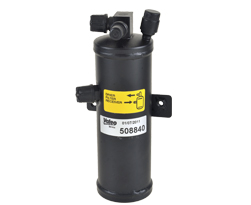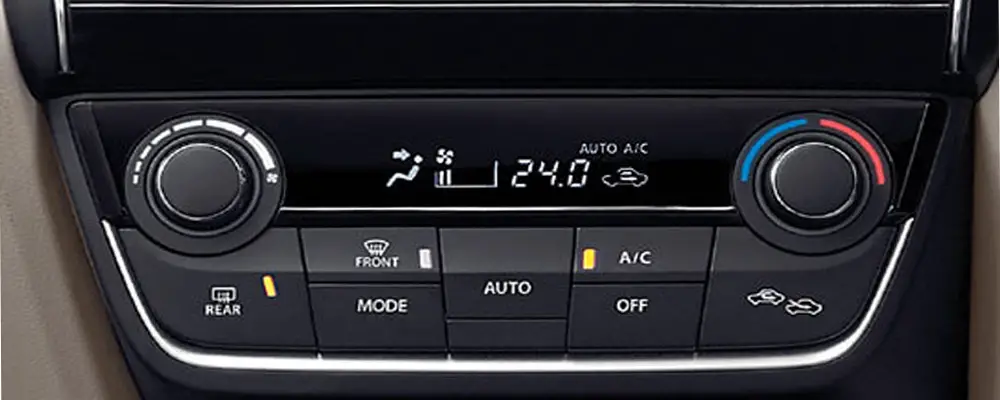Car Air-Conditioner (Car A/C): Background
In the 60s, the car air conditioner was considered a luxury. So, only about 20% of cars in the USA used to have it at that time. However, in the late 20th century, the manufacturers widely started offering the car A/C. So, today, almost every car has it. The car A/C works in two cycles: Refrigeration and Evaporative Cooling (evaporation and condensation). The primary purpose of the car air conditioner is to make the cabin ambiance comfortable for the occupants.

Firstly, Air Conditioning is the process of making the air comfortable for the car’s occupants. The engineers achieve this by making changes in the air’s properties. Thus, it mainly includes its temperature and humidity. An air conditioner is a device that changes and controls the properties of air. Basically, it improves the air quality and its thermal condition. A car air conditioner also does the same. Now, let’s understand the working of the Refrigeration Cycle employed in modern-day car A/Cs.
Just like the home A/C, the car air conditioner works on the same principle.
It has the following main components:
- Compressor
- Condenser
- Receiver Dryer
- Expansion Valve
- Evaporator Coil
Car Air Conditioning system circulates the refrigerant under pressure through these five major components in a closed circuit. At these points in the system, the refrigerant undergoes preset pressure and temperature changes. The Car Air Conditioner has two different circuits. One circulates the A/C refrigerant (cooling gas), while the other circulates the cabin air.
1.The Compressor of the Car Air Conditioner:
The refrigeration gas circulates within the closed Refrigeration Circuit. Next, it enters the compressor, which compresses it further. Finally, it increases both its temperature & pressure. First, the compressor draws the low-pressure refrigerant gas through the suction valve (low side). It then pressurizes the hot refrigerant and increases its pressure. Then, the compressor forces this hot refrigerant through the discharge valve (high side) into the condenser. Next, the A/C compressor uses a magnetic clutch to connect and disconnect the compressor from the engine. The compressor then pushes the compressed gas to the condenser unit.

2.Condensor of the Car Air Conditioner:
The front of the vehicle has a condenser. It sits behind the front grille and front of the car’s radiator, facing the wind. Ambient air passing through the condenser removes the heat from the circulating refrigerant. Thus, the refrigerant converts from gas to liquid.

The condenser unit looks and works very similar to the engine radiator. First, it absorbs the heat from the hot refrigerant. Then, it converts the high-pressure gas into the high-pressure liquid refrigerant.
3.Receiver Dryer of the Car Air Conditioner:
Furthermore, the liquid refrigerant moves onto the Receiver Drier. It also contains a filter and a desiccant. Receiver Drier filters out the impurities and removes the moisture from the refrigerant. It also serves as a temporary storage tank for the liquid refrigerant.

4.Expansion Valve of the Car Air Conditioner:
The high-pressure liquid refrigerant then flows to the expansion valve. As the refrigerant passes through the valve, it becomes low temperature, low-pressure liquid, and vapor. Finally, the expansion valve sprays the refrigerant into the evaporator in the mist form. This valve controls the amount of refrigerant entering the evaporator.

5.The evaporator of the Car Air conditioner:
The low-pressure liquid immediately starts to boil and vaporizes as it enters the evaporator. A temperature sensor at the evaporator outlet controls the expansion valve. (If the outlet temperature is too high, it indicates that sufficient refrigerant is not reaching the evaporator. Thus, it will result in poor cooling of the cabin).

The temperature sensor sends the signal to open/close the expansion valve to achieve the correct flow of the refrigerant. Thus, it enables the A/C to attain the rate and temperature of the evaporator outlet. The foggy mist of the refrigerant then enters the evaporator.
The Air-Flow Circuit:
On the other hand, the car occupants emit heat, which mixes with the cabin air. This warm air enters the evaporator as the blower pushes it from the bottom side. The cabin air passing over the evaporator fins gives up its heat to evaporating refrigerant. Since the refrigerant is colder than the air, it absorbs the heat from the air. Thus, it produces cool air then pushes into the cab interior. The ideal cabin air temperature for humans is around 23 degrees Celsius. Most automatic air conditioners try to achieve it by automatically shutting off/on the a/c compressor and recirculating the cabin air effectively.

The moisture in the air condenses upon entering the evaporator. It drops into the drain pan, from which it then drains out of the cabin. The evaporator removes humidity from the air and makes it dry. It passes the cooled air back into the cabin thru the A/C vents provided in the dashboard. Then, the temperature and pressure of the refrigerant drop. It becomes low pressure & low-temperature gas. These low pressure and low-temperature gases again enter the compressor thru’ the suction side, and this cycle repeats.
The A/C control panel has different features as compared to the home A/C.
It has following modes:
- Air on the face only
- Air on the face and legs
- On the legs only
- Air on legs and windscreen
- Automatic
Besides, the car air conditioner also has the ‘Recirculation’ and ‘Fresh Air’ modes. Ideally, you should keep this setting in the ‘Recirculation’ mode. It is because, after prolonged use, the air inside the passenger cabin becomes humid and impure. But then, it would help if you turned on the ‘Fresh Air In’ mode. Thus, it lets the outside fresh air enter the cabin and replace the warm/humid air.

Thus, A/C makes the cabin air fresh again. In order to ensure efficient cooling and reduce the air drag, it is best to roll up the windows when the A/c is in operation. The air conditioner still cools the cabin with windows open, but slowly.
Most car air conditioners can make the air upto 10 to 15 degrees cooler than the ambient air. However, the modern air conditioning system consumes the engine power significantly. Thus, it could be up to 4-5 Bhp of the engine’s power. Hence, using the Air Conditioner also affects the vehicle’s fuel efficiency. It can reduce the car’s mileage by 1-2 Km/L. Behr and Subros, Valeo, Keihin, Sanden, Aotecar are some of the leading car air conditioner manufacturers for vehicles in the world.
Refrigerant used in the Car A/C:
The refrigerant is a mixture of liquid that the Refrigeration Cycle uses. It undergoes the transformation phase from liquid to gas and back. The refrigerant is the fluid used in the car’s air conditioning system. The refrigerant transfers the heat as it changes from the liquid state to the gas state. Later, the scientists found that the Freon-R12 gas is the most damaging to the ozone layer. So, modern cars use R134a refrigerant, which is environmentally friendly. However, the emission from car air conditioners is a growing concern because of its impact on climate change.
Tips for using the Car A/C effectively:
- Always keep the front grill clear of any obstructions for the proper functioning of the air conditioner.
- Always keep the windows rolled up to maximize the efficiency of the A/c.
- Keep the air conditioner in the recirculating mode when in use.
- Use the ‘Fresh-Air’ mode only when it is necessary.
- To improve fuel efficiency, Use the air-conditioner only when it is necessary.
Watch Car Air Conditioner in action here:
Read on: How does the HVAC system Work?>>
